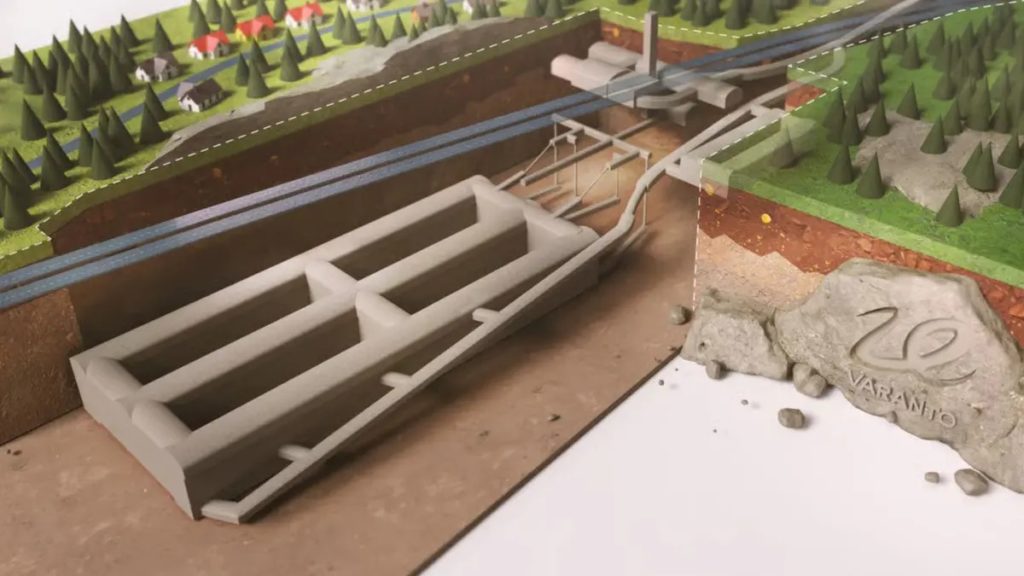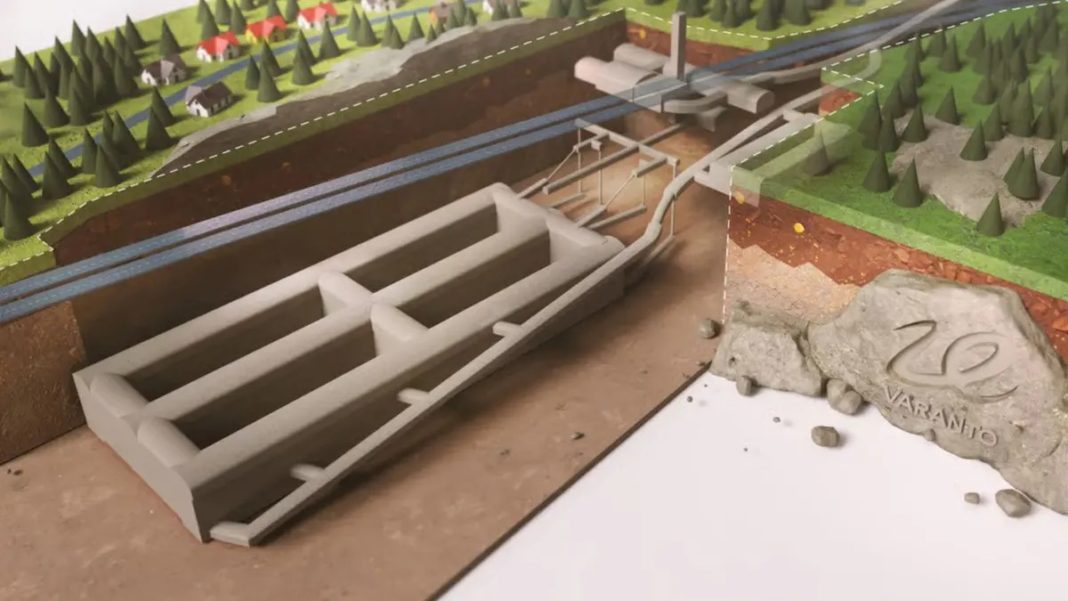Consisting of three underground caverns, the facility is proposed to have an energy storage capacity of 90 gigawatt hours (GWh) and meet the heating needs of a medium-sized city for up to a year.

With renewable energy facilities becoming the focus of future energy investments, wind and solar infrastructure is being built worldwide. However, the issues of intermittency of this energy solution present another problem before us, which is energy storage.
The Varanto project design comprises three caverns, each measuring over 300 m long, 40 m high, and 20 m wide. Together, the three caverns will have a total volume of 1.1 million cubic meters, making it the largest such facility in the world.
The structures will be built at a depth of 100 m underground. When renewable energy is produced in excess, two 60 MW water boilers will fill the caverns with hot water. The facility will maintain a high pressure, which will allow water to be heated to 140 degrees Celsius without the water boiling over or being converted into steam.
The facility’s total thermal energy capacity is 90 GWh, the equivalent of energy stored in 1.2 million electric vehicles. When fully charged, it can meet the heating needs for the whole year. Details of the system’s heating cost have not been revealed yet. However, the project, whose construction is expected to start this summer.
According to the interestingengineering















